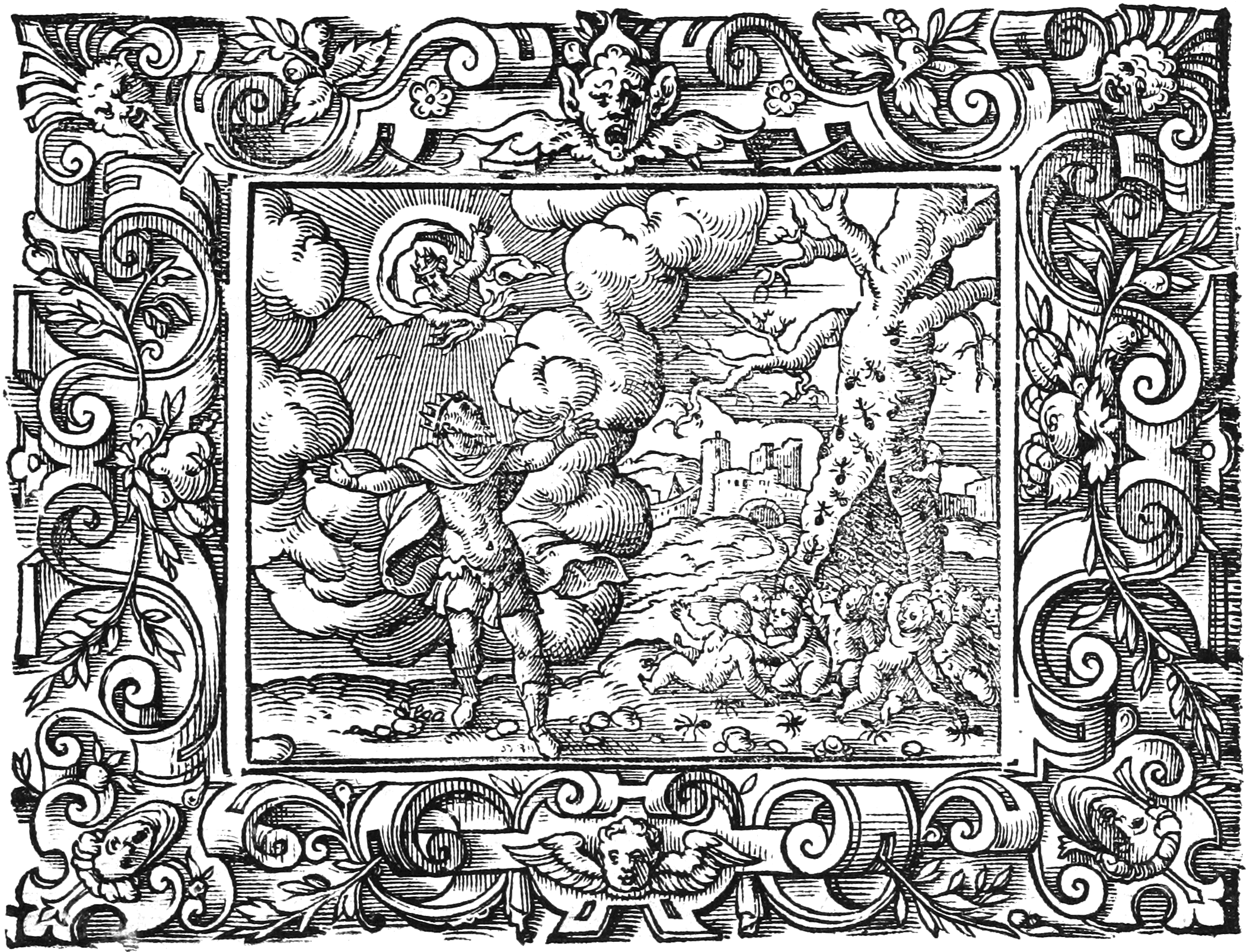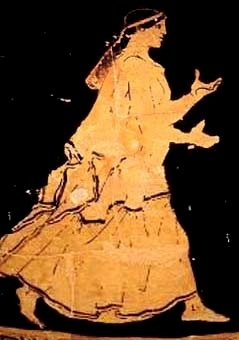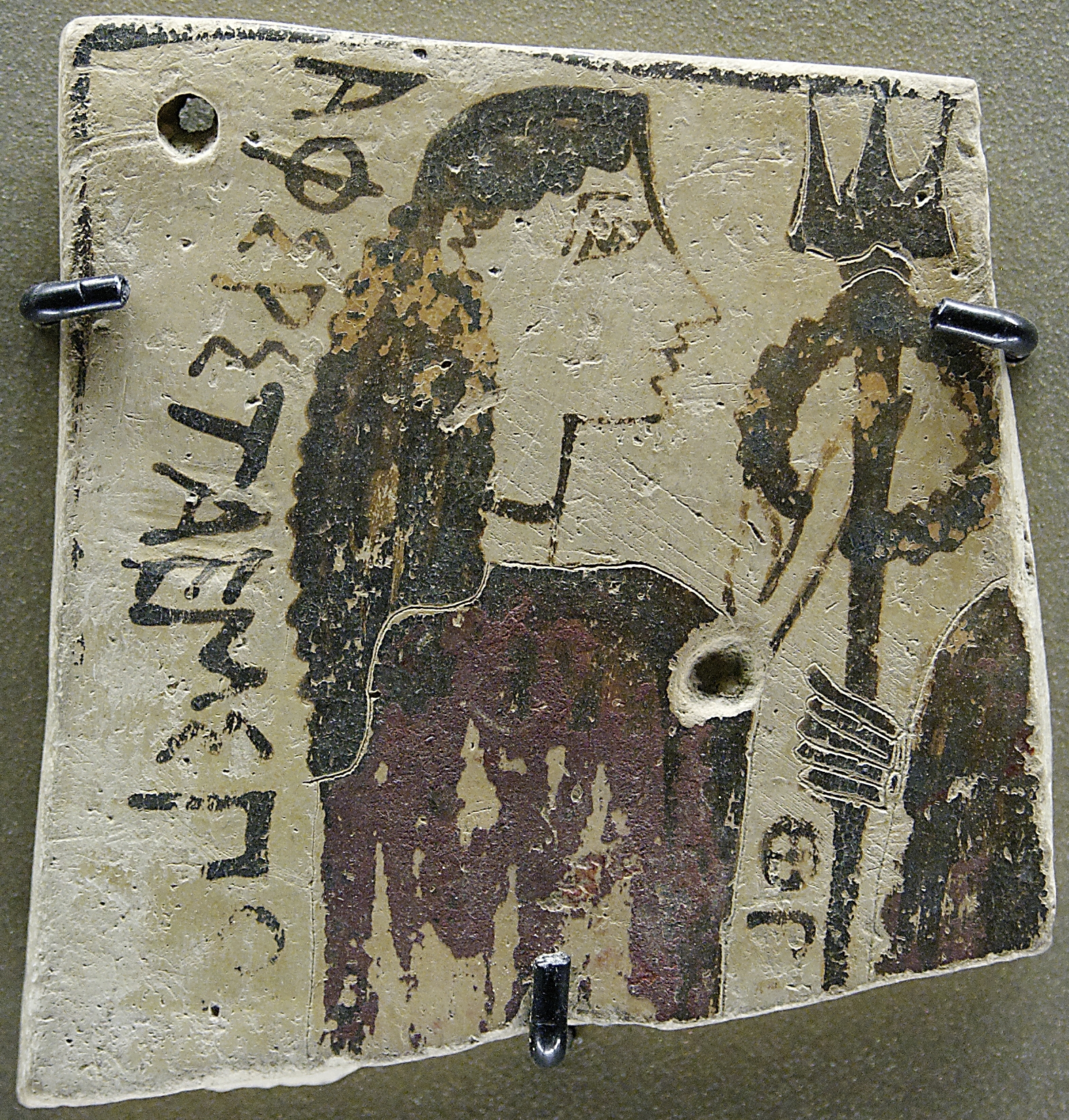|
Nereids
In Greek mythology, the Nereids or Nereides ( ; grc, Νηρηΐδες, Nērēḯdes; , also Νημερτές) are sea nymphs (female spirits of sea waters), the 50 daughters of the ' Old Man of the Sea' Nereus and the Oceanid Doris, sisters to their brother Nerites. They often accompany Poseidon, the god of the sea, and can be friendly and helpful to sailors (such as the Argonauts in their search for the Golden Fleece). Name It is not known whether the name Nereus was known to Homer or not, but the name of the Nereids is attested before it, and can be found in the ''Iliad''.; ; Since Nereus only has relevance as the father of the Nereids, it has been suggested that his name could actually be derived from that of his daughters; while the derivation of the Nereids from Nereus, as a patronymic, has also been suggested. According to Martin Litchfield West (1966), Nereus is much less important than his daughters, mentioning that Herodotus offered "the Nereids, not Nereus, as a ... [...More Info...] [...Related Items...] OR: [Wikipedia] [Google] [Baidu] |
Greek Mythology
A major branch of classical mythology, Greek mythology is the body of myths originally told by the Ancient Greece, ancient Greeks, and a genre of Ancient Greek folklore. These stories concern the Cosmogony, origin and Cosmology#Metaphysical cosmology, nature of the world, the lives and activities of List of Greek mythological figures, deities, Greek hero cult, heroes, and List of Greek mythological creatures, mythological creatures, and the origins and significance of the ancient Greeks' own cult (religious practice), cult and ritual practices. Modern scholars study the myths to shed light on the religious and political institutions of ancient Greece, and to better understand the nature of myth-making itself. The Greek myths were initially propagated in an oral tradition, oral-poetic tradition most likely by Minoan civilization, Minoan and Mycenaean Greece, Mycenaean singers starting in the 18th century BC; eventually the myths of the heroes of the Trojan War and its after ... [...More Info...] [...Related Items...] OR: [Wikipedia] [Google] [Baidu] |
French Empire Mantel Clock
A French Empire-style mantel clock is a type of elaborately decorated mantel clock that was made in France during the Napoleonic Empire (1804–1814/15). Timekeepers manufacturing during the Bourbon Restoration (1814/1815–1830) are also included within this art movement as they share similar subjects, decorative elements, shapes, and style. Precedents By the end of the 18th century, from the mid-1770s on, French clockmakers contributed to a new art movement: Neoclassicism. This style in architecture, painting, sculpture, and the decorative arts, that had come into its own during the last years of Louis XV's life, chiefly as a reaction to the excesses of the Rococo movement but also partly through the popularity of the excavations at ancient Herculaneum and Pompeii, in Italy. Clocks of this style did without the profuse ornamentation and elaborate designs of the preceding Rococo style so typical of the Louis XV reign. The timekeepers manufacturing during the Louis XVI and the Fr ... [...More Info...] [...Related Items...] OR: [Wikipedia] [Google] [Baidu] |
Aegina
Aegina (; el, Αίγινα, ''Aígina'' ; grc, Αἴγῑνα) is one of the Saronic Islands of Greece in the Saronic Gulf, from Athens. Tradition derives the name from Aegina (mythology), Aegina, the mother of the hero Aeacus, who was born on the island and became its king. Administration Municipality The municipality of Aegina consists of the island of Aegina and a few offshore islets. It is part of the Islands (regional unit), Islands regional unit, Attica (region), Attica region. The municipality is subdivided into the following five communities (population in 2011 in parentheses ): * Kypseli (2124) * Mesagros (1361) * Perdika (823) * Vathy (1495) The regional capital is the town of Aegina, situated at the northwestern end of the island. Due to its proximity to Athens, it is a popular vacation place during the summer months, with quite a few Athenians owning second houses on the island. Province The province of Aegina ( el, Επαρχία Αίγινας) was one of th ... [...More Info...] [...Related Items...] OR: [Wikipedia] [Google] [Baidu] |
Aeacus
Aeacus (; also spelled Eacus; Ancient Greek: Αἰακός) was a mythological king of the island of Aegina in the Saronic Gulf. He was a son of Zeus and the nymph Aegina, and the father of the heroes Peleus and Telamon. According to legend, he was famous for his justice, and after he died he became one of the three judges in Hades alongside Minos and Rhadamanthos. In another story, he assisted Poseidon and Apollo in building the walls of Troy. He had sanctuaries in Athens and Aegina, and the Aeginetan festival of the Aeacea (Αἰάκεια) was celebrated in his honour. Family Aeacus was the son of Zeus by Aegina, a daughter of the river-god Asopus, and thus, brother of Damocrateia. In some accounts, his mother was Europa and thus possible brother to Minos, Rhadamanthus and Sarpedon. He was the father of Peleus, Telamon and Phocus and was the grandfather of the Trojan war warriors Achilles and Telemonian Ajax. In some accounts, Aeacus had a daughter called Alcima ... [...More Info...] [...Related Items...] OR: [Wikipedia] [Google] [Baidu] |
Phocus Of Aegina
In Greek mythology, Phocus (; Ancient Greek: Φῶκος means "seal"), was a prince of Aegina and son of Aeacus and Psamathe. Mythology Phocus' mother Psamathe, the Nereid goddess of sand beaches, transformed herself into a seal when she was ambushed by Aeacus, and was raped as a seal; conceived in the rape, Phocus' name means "seal".Apollodorus, 3.12.6 According to Pindar, Psamathe gave birth to Phocus on the seashore. By Asteria or Asterodia, Phocus had twin sons, Crisus and Panopeus. Aeacus favored Phocus over Peleus and Telamon, his two sons with Endeïs. The '' Bibliotheca'' characterizes Phocus as a strong athlete, whose athletic ability caused his half-brothers to grow jealous. Their jealousy drove them to murder him during sport practice; Telamon, the stronger half-brother, threw a discus at Phocus' head, killing him. The brothers hid the corpse in a thicket, but Aeacus discovered the body and punished Peleus and Telamon by exiling them from Aegina. Telamon was sent t ... [...More Info...] [...Related Items...] OR: [Wikipedia] [Google] [Baidu] |
Psamathe (Nereid)
In Greek mythology, Psamathe ( grc, Ψαμάθη) is a Nereid, one of the fifty daughters of the sea god Nereus and the Oceanid Doris. By Aeacus, the king of Aegina, she is the mother of a son, Phocus. When Phocus is killed by his half-brothers Peleus and Telamon, Psamathe sends a giant wolf at Peleus' herd. Family Psamathe is one of the fifty Nereids, daughters of Nereus and Doris. By Aeacus, the king of Aegina, she is the mother of a son, Phocus. She is later the wife of Proteus, king of Egypt, by whom she has a son, Theoclymenos, and a daughter, Eido (later known as Theonoe). Mythology There are two myths which involve Psamathe. The first is the story of her violation by Aeacus. Upon his advances, she transforms herself into a seal in an attempt to escape. She is unsuccessful, however, and from their union is born Phocus, whose name (''phoke'' meaning "seal") recalls his mother's metamorphosis. Peleus and Telamon are the sons of Aeacus by his wife Endeis. The two of ... [...More Info...] [...Related Items...] OR: [Wikipedia] [Google] [Baidu] |
Polyphemus
Polyphemus (; grc-gre, Πολύφημος, Polyphēmos, ; la, Polyphēmus ) is the one-eyed giant son of Poseidon and Thoosa in Greek mythology, one of the Cyclopes described in Homer's ''Odyssey''. His name means "abounding in songs and legends". Polyphemus first appeared as a savage man-eating giant in the ninth book of the ''Odyssey''. The satyr play of Euripides is dependent on this episode apart from one detail; Polyphemus is made a pederast in the play. Later Classical writers presented him in their poems as heterosexual and linked his name with the nymph Galatea. Often he was portrayed as unsuccessful in these, and as unaware of his disproportionate size and musical failings. In the work of even later authors, however, he is presented as both a successful lover and skilled musician. From the Renaissance on, art and literature reflect all of these interpretations of the giant. Odysseus and Polyphemus Ancient sources In Homer's epic, Odysseus lands on the island of the ... [...More Info...] [...Related Items...] OR: [Wikipedia] [Google] [Baidu] |
Cyclopes
In Greek mythology and later Roman mythology, the Cyclopes ( ; el, Κύκλωπες, ''Kýklōpes'', "Circle-eyes" or "Round-eyes"; singular Cyclops ; , ''Kýklōps'') are giant one-eyed creatures. Three groups of Cyclopes can be distinguished. In Hesiod's ''Theogony'', the Cyclopes are the three brothers Brontes, Steropes, and Arges, who made for Zeus his weapon the thunderbolt. In Homer's ''Odyssey'', they are an uncivilized group of shepherds, the brethren of Polyphemus encountered by Odysseus. Cyclopes were also famous as the builders of the Cyclopean walls of Mycenae and Tiryns. In ''Cyclops'', the fifth-century BC play by Euripides, a chorus of satyrs offers comic relief based on the encounter of Odysseus and Polyphemus. The third-century BC poet Callimachus makes the Hesiodic Cyclopes the assistants of smith-god Hephaestus; as does Virgil in the Latin epic ''Aeneid'', where he seems to equate the Hesiodic and Homeric Cyclopes. From at least the fifth century BC, Cyc ... [...More Info...] [...Related Items...] OR: [Wikipedia] [Google] [Baidu] |
Triton (mythology)
Triton (; grc-gre, Τρίτων, Trítōn) is a Greek mythology, Greek god of the sea, the son of Poseidon and Amphitrite, god and goddess of the sea respectively. Triton lived with his parents in a golden palace on the bottom of the sea. Later he is often depicted as having a conch shell he would blow like a trumpet. Triton is usually represented as a merman, with the upper body of a human and the tailed lower body of a fish. At some time during the Greek and Roman era, Triton(s) became a generic term for a merman (mermen) in art and literature. In English literature, Triton is portrayed as the messenger or herald for the god Poseidon. Triton of Lake Tritonis of ancient Libya is a namesake mythical figure that appeared and aided the Argonauts. Moreover, according to Apollonius Rhodius, he married the Oceanids, Oceanid of said region, Libya (Greek myth), Libya. Sea god Triton was the son of Poseidon and Amphitrite according to Hesiod's ''Theogony''. He was the ruler (possesso ... [...More Info...] [...Related Items...] OR: [Wikipedia] [Google] [Baidu] |
Amphitrite
In ancient Greek mythology, Amphitrite (; grc-gre, Ἀμφιτρίτη, Amphitrítē) was the goddess of the sea, the queen of the sea, and the wife of Poseidon. She was a daughter of Nereus and Doris (or Oceanus and Tethys).Roman, L., & Roman, M. (2010). Under the influence of the Olympian pantheon, she became the consort of Poseidon and was later used as a symbolic representation of the sea. Her Roman counterpart is Salacia, a comparatively minor figure, and the goddess of saltwater. Mythology Amphitrite was a daughter of Nereus and Doris (and thus a Nereid), according to Hesiod's ''Theogony'', but of Oceanus and Tethys (and thus an Oceanid), according to the '' Bibliotheca'', which actually lists her among both the Nereids and the Oceanids. Others called her the personification of the sea itself (saltwater). Marriage to Poseidon When Poseidon desired to marry her, Amphitrite, wanting to protect "her virginity", fled to the Atlas mountains. Poseidon sent many crea ... [...More Info...] [...Related Items...] OR: [Wikipedia] [Google] [Baidu] |
Achilles
In Greek mythology, Achilles ( ) or Achilleus ( grc-gre, Ἀχιλλεύς) was a hero of the Trojan War, the greatest of all the Greek warriors, and the central character of Homer's ''Iliad''. He was the son of the Nereid Thetis and Peleus, king of Phthia. Achilles' most notable feat during the Trojan War was the slaying of the Trojan prince Hector outside the gates of Troy. Although the death of Achilles is not presented in the ''Iliad'', other sources concur that he was killed near the end of the Trojan War by Paris, who shot him with an arrow. Later legends (beginning with Statius' unfinished epic ''Achilleid'', written in the 1st century AD) state that Achilles was invulnerable in all of his body except for one heel, because when his mother Thetis dipped him in the river Styx as an infant, she held him by one of his heels. Alluding to these legends, the term " Achilles' heel" has come to mean a point of weakness, especially in someone or something with an otherwise strong ... [...More Info...] [...Related Items...] OR: [Wikipedia] [Google] [Baidu] |









